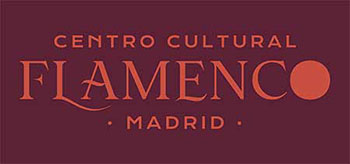Text: Estela Zatania
Photos: Ana Palma
Pastora Galván «&dentidades»
Tomás de Perrate «Perraterías», guest artist Belén Maya
Friday, March 6th, 2015. Jerez de la Frontera
Special 19th Festival de Jerez – All the information
On Friday March 6th, next-to-last day of the Festival de Jerez, once again flamenco followers had to assimilate the loss of a beloved artist. Pilar Montoya Manzano «La Faraona», matriarch of the Farruco dynasty was 54 years old.
At 7pm at the Sala Compañía, Málaga guitarist Juan Requena presented his recording «Arroyo de la Miel», with a complete back-up that included among others, singers José Ángel Carmona and Anabel Valencia, the violin of Bernardo Parrilla and special guest artist, Remedios Amaya. Video – Photo Gallery
First-class flamenco lineage for the next-to-last day of the Festival de Jerez
PASTORA GALVÁN «&DENTIDADES»
Teatro Villamarta, 900pm
Dance: Pastora Galván. Cante: Miguel Ortega, Cristián Guerrero. Guitar: Ramón Amador, Pedro Sánchez. Acting and palmas: María del Mar Montero «La Canija». Guest artists: Juana la del Pipa, José Galván. Director: Antonio Canales. Choreography: Pastora Galván.
After a minute of silence in honor of La Faraona, Pastora Galván's show «&dentidades», which debuted at the last Bienal de Flamenco de Sevilla, began with the staged «notice» that «the show will begin in five minutes», and we see Pastora readying herself for the marathon of dance she is about to undertake.
The work is based on an elegantly simple premise: that of honoring various current female stars of Seville flamenco dance through a series of vignettes, like those old postcards of flamenco dancers, where we easily identify the various individuals represented.
Beginning with Matilde Coral and her classic alegrías with shawl and bata de cola, and stepping like a proud pony, all typical of the «Seville school», another veteran dancer, Loli Flores, less known but very admired within flamenco, was depicted through siguiriyas. Taranto is the chosen vehicle to recreate the elegant dancing of Milagros Mengíbar, and a caña serves to evoke the classic forms of Eugenia de los Reyes, Pastora's mother. All the while, it's Pastora exploring within herself in dance after dance, without a rest.
The atmosphere of the tablaos of the nineteen-seventies and eighties was evoked, and the audience received José Galván, Pastora's father, as the maestro he is. His long soleá dance demonstrated the power of classic flamenco, and the solid roots shared by Israel and Pastora. Without a doubt, José Galván was the star of the night, and the rousing ovation he received moved him to tears.
Pastora, barefoot, used the rhythm of «romance», a form halfway between bulería and soleá, without being soleá por bulería, to conjure up the style of Carmen Ledesma, although there was more Pastora than Ledesma in the characterization.
Juana la del Pipa herself offered a change of pace with her bulerías, and the majestic dancing of Manuela Carrasco in soleá was represented by the verstatile Pastora who reproduced the dancer's most famous moves. Juana returned to recite some classic verses of cante to jump-start a long fiesta finale with bulerías and tanos, once again with the participation of José Galván.
TOMÁS DE PERRATE «PERRATERÍAS»
Sala Paúl, 12 midnight
Cante: Tomás de Perrate. Guest artist: Belén Maya. Guitar: Amador Gabarri. Violin: Eloísa Cantón.
Video – Photo Gallery
This show could have been titled «Otrera», «an alternative Utrera», because of the artistic personality of Tomás de Perrate. He's Utrera through and through, because of how he sings, his repertoire and his admirable family background. But there's more to him than that. He was born into the full Camarón/Paco frenzy, and felt the need to continue broadening his flamenco perspective.
For example, the novelty of opening with stylized contemporary tonás, accompanied on guitar and with discreet percussion. It's not that this was necessarily better or worse than the classic way, but it was an attempt to dust off and update song forms in danger of stagnation. Tomás is bold enough to explore and take risks.
The singer spoke to the audience beginning with an enthusiastic «Jerez at last!». His tientos tangos were pure Gaspar de Utrera in the tientos, the singer who most defined and personalized this form. He spoke of his family ties with Manuel Torre and Tomás Torre, then announcing he would sing the siguiriyas of Manuel Torre «but the Tomás Torre version». These are enriching details that add dimension.
The thick rich voice of Tomás, combined with a sweet delivery inherited from his illustrious father, Perrate de Utrera, interpreted cantiñas of Pinini, but the greatest impact was caused by guest artist Belén Maya. She nearly stole the entire show away from Tomás in her two appearances. Normally, we see her in large theaters, so it was quite a treat to be able to appreciate her at close range, her expressive face, the subtle movements…
In my opinion Tomás should have brought professional palmeros, a second guitar to back up young Amador Gabarri and a better-prepared percussionist.
The singer paid tribute to Enrique Morente with a song, and pointed out that this year is the one hundredth anniversary of his father Perrate's birth. He ended the varied show with bulerías in the purest style of Utrera.

























